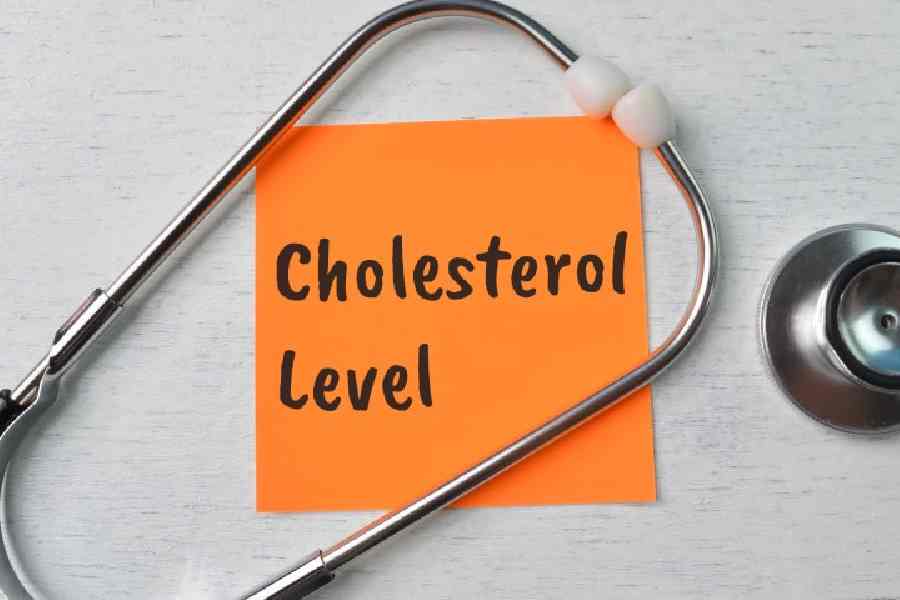How harmful is “bad cholesterol” for your health? Should you worry if your total cholesterol is just on the cusp of being too high? And how much can you lower your cholesterol levels by changing your diet or exercise habits? Here’s what to know about cholesterol tests and management.
What is it?
Cholesterol is a fatty substance (also called a lipid) that is produced by the liver. It’s essential for making cell membranes, hormones and more. Usually, your liver makes all the cholesterol you need. However, some foods, including meat and dairy products, may increase the cholesterol circulating in your blood, which is why you may be asked to abstain from food before a cholesterol test.
Cholesterol gets a bad rap because there’s strong evidence linking higher levels to plaque buildup in the arteries and the hardening of blood vessel walls over time. In medical terms, this is called atherosclerosis. Eventually, the buildup can block blood flow to your heart, causing a heart attack. Pieces of plaque can also rupture and travel to other parts of your body, causing a stroke.
Most people don’t have any symptoms until their arteries are already severely clogged.
Tests
A doctor can check your cholesterol through a blood test called a lipid panel or lipoprotein profile. This measures total cholesterol; low-density lipoprotein, or LDL, cholesterol; high-density lipoprotein, or HDL, cholesterol; and triglycerides, another type of fat that hardens the arteries and mainly comes from food. These are all reported in milligrams per decilitre.
Sometimes the test also includes very-low-density lipoprotein, or VLDL, which carries triglycerides to different parts of the body.
For some people, a doctor may also order a test for apolipoprotein B, or ApoB, which is the particle that actually carries the cholesterol in your blood.
Normal levels
Cholesterol levels generally increase with age. Men tend to have higher levels throughout their lives, while women typically experience an increase in cholesterol levels during pregnancy or at menopause. Certain genes can also influence how much cholesterol your body makes.
Perhaps the most important number to track is your LDL, which is considered the “bad cholesterol” that can build up on artery walls. For most people, LDL should be below 100 mg/dL.
People with diabetes, existing plaque buildup or other factors that put them at risk of heart disease may need to keep LDL below 70, said Dr Douglas Jacoby, medical director of the Penn Medicine Center for Preventive Cardiology and Lipid Management in the US.
High triglyceride levels are also associated with an increased risk of heart disease. Ideally, these levels should stay under 150 mg/dL.
HDL, also known as “good cholesterol”, picks up extra cholesterol from your arteries and carries it back to the liver so it can be removed from the body. That is why higher HDL levels are generally considered better. Aim to keep HDL above 40 mg/dL, with a score above 60 being considered optimal.
But when HDL is higher than 80 mg/dL in men or 100 mg/dL in women, it may lose its protective function and instead accelerate atherosclerosis, some studies suggest.
It can be trickier to assess your heart disease risk when LDL or triglyceride levels fall into a “borderline high” category. In these cases, a doctor may review some additional calculations included in your test report, such as your total cholesterol, which is calculated by adding HDL, LDL and 20 per cent of your triglyceride level.
An even more useful measure may be the non-HDL number, indicating how much of the total cholesterol is made up of LDL and other artery-clogging particles. This number doesn’t include triglycerides, so it may more accurately reflect your cholesterol when you’re eating normally, rather than fasting for a blood test.
Doctors can also look at your cholesterol ratio, the total cholesterol divided by HDL. The higher the ratio, the greater your risk of heart disease.
Low is good
Eating more soluble fibre in the form of legumes, whole grains, seeds, fruit and vegetables can help bind cholesterol in the digestive tract and remove it from your body. Some foods, such as nuts, avocados and fatty fish, also contain polyunsaturated fats, which lower LDL cholesterol in the blood.
Try to limit foods high in saturated fats, trans fats and cholesterol, such as red meat, butter and cheese, and choose plant proteins such as soy and minimally processed foods instead.
Exercising a few days a week can further decrease your LDL and triglyceride levels while increasing HDL cholesterol.
Medication
A doctor may recommend cholesterol-lowering drugs if you have already had a heart attack or stroke or if an ultrasound or angiogram shows significant blockages in your arteries. A provider may also consider medication if your LDL cholesterol is 190 or higher.
For most other people, doctors consider cholesterol levels in combination with age, family history of heart disease, smoking history and other factors before deciding whether to prescribe a drug.
The most commonly prescribed cholesterol drugs are statins, which reduce LDL cholesterol. It may take some trial and error to find the right drug and dose, and most people need to stay on statins for life. Stopping the medication can cause your cholesterol levels and risk of developing heart disease to go back up.
NYTNS










